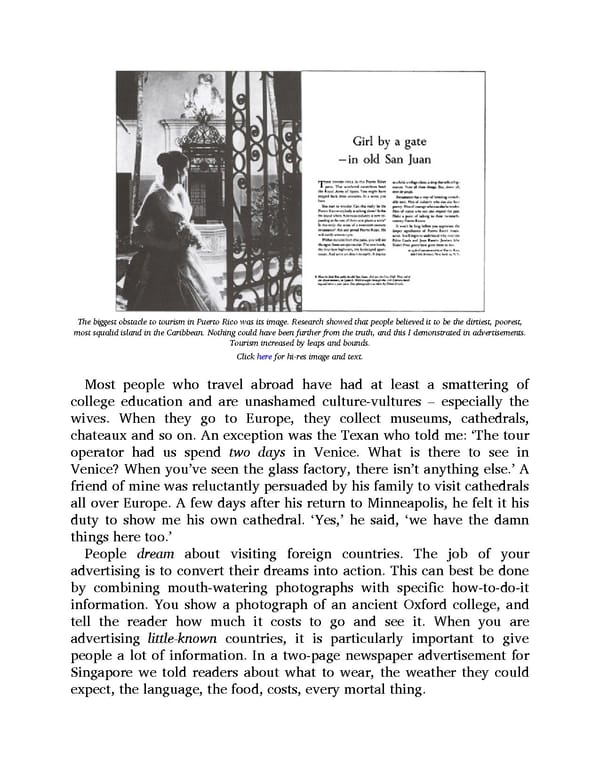The biggest obstacle to tourism in Puerto Rico was its image. Research showed that people believed it to be the dirtiest, poorest, most squalid island in the Caribbean. Nothing could have been further from the truth, and this I demonstrated in advertisements. Tourism increased by leaps and bounds. Click here for hi-res image and text. Most people who travel abroad have had at least a smattering of college education and are unashamed culture-vultures – especially the wives. When they go to Europe, they collect museums, cathedrals, chateaux and so on. An exception was the Texan who told me: ‘The tour operator had us spend two days in Venice. What is there to see in Venice? When you’ve seen the glass factory, there isn’t anything else.’ A friend of mine was reluctantly persuaded by his family to visit cathedrals all over Europe. A few days after his return to Minneapolis, he felt it his duty to show me his own cathedral. ‘Yes,’ he said, ‘we have the damn things here too.’ People dream about visiting foreign countries. The job of your advertising is to convert their dreams into action. This can best be done by combining mouth-watering photographs with specific how-to-do-it information. You show a photograph of an ancient Oxford college, and tell the reader how much it costs to go and see it. When you are advertising little-known countries, it is particularly important to give people a lot of information. In a two-page newspaper advertisement for Singapore we told readers about what to wear, the weather they could expect, the language, the food, costs, every mortal thing.
 Ogilvy on Advertising Page 193 Page 195
Ogilvy on Advertising Page 193 Page 195